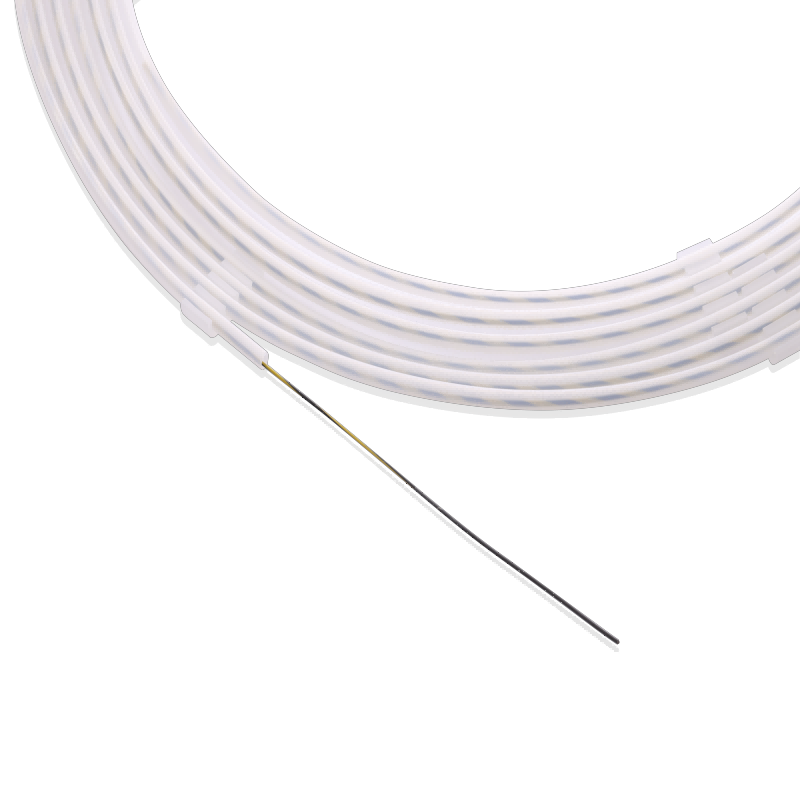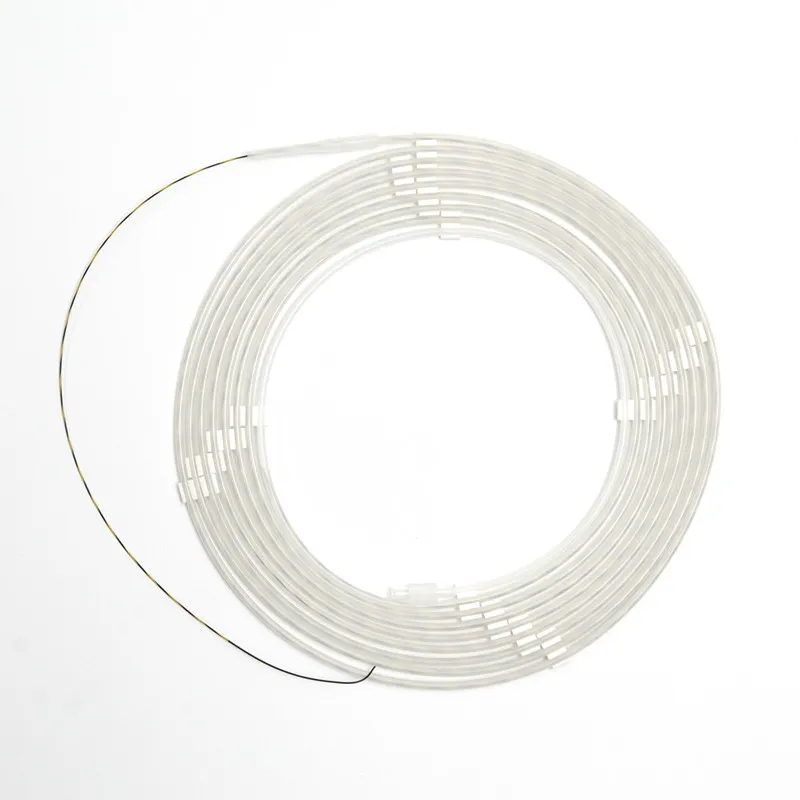Guidewires are essential tools in many medical procedures. They help in catheterization and other medical interventions. Guidewires guide catheters through the body, making procedures safer and more effective. Soft tip guidewires are made for the digestive tract and airway. They move smoothly through these sensitive areas. Using disposable guidewires is important for patient safety. Disposable devices reduce the risk of infections. They also make procedures more convenient for healthcare workers. The Demax Disposable Guidewire for Digestive Tract and Airway is a modern medical device. It is designed to help healthcare professionals navigate endoscopic instruments easily. This guidewire provides precision and ease in complex anatomical structures.

Types of Guidewires
Traditional vs. Disposable Guidewires
There are two main types of guidewires: traditional and disposable. Traditional guidewires are reusable and made from durable materials. They require thorough cleaning and sterilization after each use.
On the other hand, disposable guidewires are designed for single use. They are made from materials that ensure they can be safely discarded after the procedure. Disposable guidewires help reduce the risk of infections.
They also save time for healthcare workers because there is no need for cleaning. Additionally, disposable guidewires are often lighter and more flexible than traditional ones, making them easier to handle during procedures.
Soft Tip Design
Soft tip guidewires have a rounded and smooth end. This design helps to minimize tissue trauma. When guidewires move through the body, the soft tip reduces the chance of damaging delicate tissues. This is especially important in areas like the digestive tract and airway. A soft tip makes the procedure more comfortable and safe for patients. It allows the guidewire to navigate through tight and sensitive spaces without causing harm. The gentle design ensures that the guidewire can reach its target area smoothly.
Design and Materials
Construction of the Soft Tip Guidewire
Demax soft tip guidewires are made from special materials that make them flexible and strong. The soft tip is often developed with hydrophilic properties. This means it becomes slippery when wet, allowing the guidewire to move easily through the body. This smooth advancement helps doctors position the guidewire accurately using X-ray guidance. Accurate positioning is crucial for the success of the procedure.
The shaft of the guidewire is also designed to be flexible and strong. It can bend and twist without breaking, which is important when navigating through complex body structures. The guidewire shaft has good torqueability, meaning it responds well to twisting motions from the doctor. This ensures precise control during the procedure.
The soft-tip connection technology is another important feature. It ensures that the guidewire stays connected securely throughout the procedure. There is no risk of the guidewire disconnecting, which could cause delays or complications. This secure connection makes the procedure safer and more efficient for both the patient and the healthcare provider.
Coatings and Surface Treatments
Demax Guidewires have special coatings to improve their performance. The coating is ultra-smooth Teflon. This coating makes it easier to insert the guidewire into the body. It reduces friction, allowing the guidewire to move smoothly through tissues. Another feature is the two-color spiral design. This design helps doctors see the guidewire clearly on imaging devices like X-rays. Clear visualization of the guidewire helps in tracking its movement and position during the procedure. This enhances the precision of the procedure.
The core of the guidewire is made from a material called Nitinol. Nitinol is highly elastic and provides excellent torsional stiffness. This means the guidewire can twist and turn without kinking. The stiffness ensures that the guidewire can pass through complex anatomical structures smoothly. It also helps in maintaining the shape of the guidewire during navigation. By minimizing the risk of kinking, the guidewire remains effective throughout the procedure.
Applications in Medical Procedures
Digestive Tract Procedures
1. Endoscopic Retrograde Cholangiopancreatography (ERCP)
ERCP uses guidewires to help move endoscopes and tools. This helps doctors diagnose and treat problems in the bile and pancreatic ducts. Guidewires make it easier to navigate these areas safely.
2. Endoscopic Ultrasound (EUS)
Guidewires assist in advancing ultrasound probes during EUS. This helps doctors examine the gastrointestinal system and nearby organs. Using guidewires ensures the probes reach the right areas for accurate evaluations.

3. Endoscopic Mucosal Resection (EMR) and Endoscopic Submucosal Dissection (ESD)
In EMR and ESD, guidewires help move endoscopic tools that remove growths in the digestive tract. Guidewires make it easier to reach and remove lesions with precision.
4. Endoscopic Stent
Guidewires are used to place stents in the digestive and respiratory tracts. Stents help manage narrowings and blockages. Guidewires ensure stents are placed correctly and securely.
Airway Catheterization
1. Intubation Assistance, Bronchoscopy, and Airway Management
Guidewires help with intubation and bronchoscopy. They assist in managing the airway during these procedures. Guidewires make it easier to insert and control bronchoscopes.
2. Bronchoscopy
During bronchoscopy, guidewires help navigate the bronchoscope. This is important for diagnosing and treating airway issues. Guidewires aid in removing foreign objects, taking biopsies, and placing stents.
3. Minimizing Trauma to the Respiratory Tract During Insertion
Using guidewires reduces damage to the airways. The soft tip of the guidewire moves smoothly, causing less irritation. This makes the insertion process safer and more comfortable for patients.
Benefits of Disposable Guidewires
Safety and Infection Control
1. Reducing the Risk of Cross-Contamination and Infection
Disposable guidewires are used once and then thrown away. This prevents the spread of infections between patients. Single use keeps procedures safer.
2. Compliance with Hospital Hygiene Protocols
Using disposable guidewires helps hospitals follow strict hygiene rules. It ensures that each procedure starts with a clean tool, maintaining high safety standards.
Cost and Convenience
1. Economical Alternative to Reusable Guidewires
Disposable guidewires are often cheaper than reusable ones. They save money by eliminating the need for cleaning and sterilizing after each use.
2. Ease of Disposal and Reduced Need for Sterilization
Disposable guidewires are easy to throw away after use. This reduces the time and effort needed for sterilization. It also speeds up the preparation for the next procedure.
The Demax Disposable Guidewire comes in different types. It is available in pre-shaped, coated, and zebra versions. This variety meets different clinical needs and preferences.
Clinical Considerations
Patient Safety
1. Minimizing Risks Like Perforation, Irritation, or Injury
Guidewires are designed to reduce the chances of harming patients. They help avoid perforations and irritation during procedures. This makes treatments safer.
2. Soft Tip and Design Features That Enhance Safety
The soft tip of disposable guidewires moves smoothly through tissues. This design feature lowers the risk of injury. Safe design ensures patient comfort and reduces complications.
Procedure Efficiency
1. Facilitating Smoother, More Efficient Catheterization Procedures
Guidewires make catheterization faster and easier. They help doctors perform procedures smoothly without delays. Efficient use of guidewires improves overall workflow.
2. Role in Reducing Procedure Time and Complications
Using guidewires can shorten the time needed for procedures. They also lower the chance of mistakes and complications. This leads to better outcomes for patients and healthcare providers.
In Closing
Disposable Soft Tip Guidewire for Catheterization plays a vital role in medical procedures. They enhance safety and reduce infection risks. Their design ensures smooth navigation through delicate areas. Disposable guidewires are cost-effective and convenient for healthcare settings. They help doctors perform procedures efficiently and with fewer complications. Overall, disposable guidewires like the Demax’s support better patient care and streamline medical interventions.